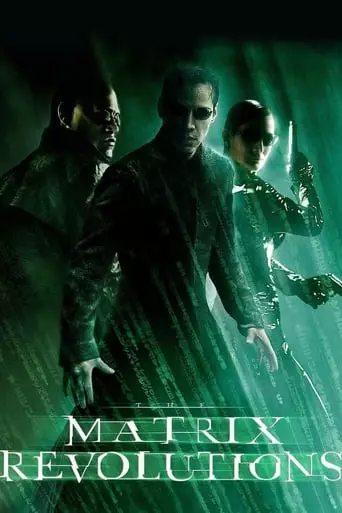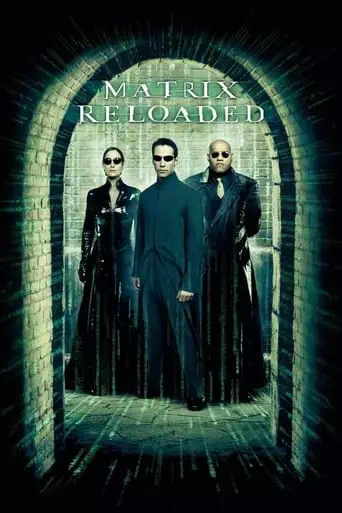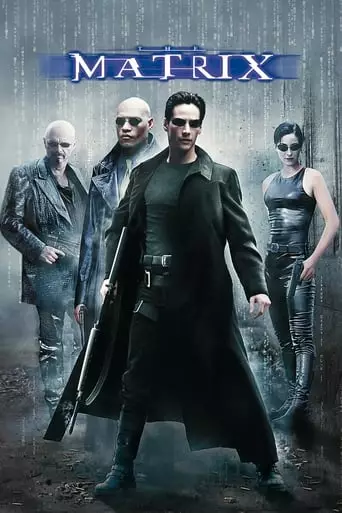The human city of Zion defends itself against the massive invasion of the machines as Neo fights to end the war at another front while also opposing the rogue Agent […]

The human city of Zion defends itself against the massive invasion of the machines as Neo fights to end the war at another front while also opposing the rogue Agent […]

A set of six nested stories spanning time between the 19th century and a distant post-apocalyptic future. Cloud Atlas explores how the actions and consequences of individual lives impact one […]

Six months after the events depicted in The Matrix, Neo has proved to be a good omen for the free humans, as more and more humans are being freed from […]

Set in the 22nd century, The Matrix tells the story of a computer hacker who joins a group of underground insurgents fighting the vast and powerful computers who now rule […]

Speed Racer is a young and brilliant racing driver. When corruption in the racing leagues costs his brother his life, Speed must team up with the police and the mysterious […]

Corky, a tough female ex-convict working on an apartment renovation in a Chicago building, meets a couple living next door, Caesar, a paranoid mobster, and Violet, his seductive girlfriend, who […]
Andy Wachowski: A Visionary Storyteller in Sci-Fi and Beyond
Andy Wachowski, along with their sibling Lana Wachowski, is one-half of the groundbreaking filmmaking duo known for creating some of the most visually stunning and conceptually ambitious films in modern cinema. Best known for The Matrix trilogy (1999–2003), Andy has consistently pushed the boundaries of storytelling, blending philosophical depth with cutting-edge technology. Their work spans multiple genres and mediums, including science fiction, action, and drama, with a focus on themes of identity, freedom, and transformation.
Early Life and Creative Beginnings
Born Andrew Paul Wachowski on December 29, 1967, in Chicago, Illinois, Andy grew up in a creative and intellectually curious household. Their parents were a nurse and a businessman, and the siblings often collaborated on artistic projects from a young age. Andy attended Emerson College in Boston but left before graduating to pursue a career in the arts.
Before entering the film industry, Andy and Lana worked in construction and as comic book writers, where they developed a knack for visual storytelling and intricate world-building. Their early foray into screenwriting led to their first produced script, Assassins (1995), directed by Richard Donner. While the film’s final version deviated from their original vision, it paved the way for their directorial debut.
Breakthrough with The Matrix
In 1999, Andy and Lana Wachowski redefined science fiction cinema with The Matrix. The film combined a cyberpunk aesthetic with groundbreaking special effects, including the now-iconic “bullet time” sequences. Starring Keanu Reeves, Carrie-Anne Moss, and Laurence Fishburne, The Matrix explored themes of reality, free will, and resistance against oppressive systems.
The film was a critical and commercial success, earning four Academy Awards and spawning a cultural phenomenon. Its philosophical underpinnings, inspired by thinkers like Jean Baudrillard and concepts from Buddhism, resonated deeply with audiences, while its innovative action sequences influenced countless films and video games.
Expanding the Matrix Universe
Following the success of The Matrix, Andy and Lana expanded the story with The Matrix Reloaded and The Matrix Revolutions (both released in 2003). The sequels delved deeper into the mythology of the Matrix, exploring themes of choice, destiny, and systemic control.
Though the sequels received mixed reviews compared to the original, they were commercially successful and further solidified the Wachowskis’ reputation as visionary filmmakers. The trilogy’s influence extended beyond cinema, inspiring academic discourse, fan theories, and transmedia storytelling through video games and animated shorts like The Animatrix (2003).
Exploring New Worlds
After The Matrix trilogy, Andy Wachowski continued to explore ambitious, genre-defying projects:
V for Vendetta (2005): Written and produced by the Wachowskis and directed by James McTeigue, this adaptation of Alan Moore’s graphic novel became a modern classic. The film’s themes of rebellion against authoritarianism resonated globally, and its imagery—particularly the Guy Fawkes mask—became a symbol of real-world protest movements.
Speed Racer (2008): A visually vibrant adaptation of the 1960s anime, this film showcased the Wachowskis’ flair for stylized action and family-friendly storytelling. Though it received mixed reviews upon release, it has since gained a cult following for its bold visuals and heartfelt narrative.
Cloud Atlas (2012): Co-directed with Tom Tykwer, this ambitious adaptation of David Mitchell’s novel wove together six interconnected stories spanning centuries. Featuring a star-studded cast including Tom Hanks and Halle Berry, the film explored themes of reincarnation, interconnectedness, and the ripple effects of individual actions. While polarizing, Cloud Atlas was praised for its audacity and emotional resonance.
Jupiter Ascending (2015): A space opera starring Mila Kunis and Channing Tatum, this film combined epic world-building with themes of power and genetic destiny. Though it struggled critically and commercially, it remains a testament to the Wachowskis’ commitment to imaginative storytelling.
Television Success with Sense8
In 2015, Andy and Lana brought their storytelling talents to television with Sense8, a Netflix series that followed eight individuals from around the world who share a psychic connection. The show explored themes of empathy, identity, and the power of human connection, featuring a diverse cast and groundbreaking depictions of LGBTQ+ relationships.
Despite its cancellation after two seasons, Sense8 garnered a passionate fanbase and critical acclaim for its inclusivity and emotional depth. A two-hour finale, released in 2018, provided closure to the series.
Themes and Style
Andy Wachowski’s work is characterized by:
Philosophical Depth: Their films often grapple with existential questions, blending action and spectacle with intellectual inquiry.
Innovative Visuals: From the “bullet time” effects in The Matrix to the kaleidoscopic visuals of Speed Racer, Andy’s films are known for pushing technological boundaries.
Diversity and Inclusion: Andy and Lana have consistently championed LGBTQ+ representation, both on-screen and off. Their work often celebrates individuality and challenges societal norms.
Epic Storytelling: Whether exploring dystopian futures or interwoven timelines, Andy’s films are marked by their ambition and scale.
Personal Life
Andy Wachowski came out as transgender in 2016, following Lana’s public transition in 2012. Now known as Lilly Wachowski, Andy has been a vocal advocate for transgender rights and representation in media. The Wachowskis’ personal journeys have informed their storytelling, particularly in works like Sense8, which celebrates themes of self-discovery and acceptance.
Legacy and Influence
Andy Wachowski’s contributions to cinema have left an indelible mark on the industry. The Matrix trilogy alone revolutionized visual effects and action filmmaking, while their commitment to ambitious storytelling continues to inspire filmmakers and audiences alike.
By blending philosophical inquiry with groundbreaking visuals, Andy Wachowski has redefined what genre cinema can achieve. Their work remains a testament to the power of storytelling to challenge perceptions, ignite imagination, and connect people across boundaries.